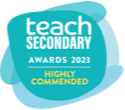How will these resources help you?
'When we try to pick out anything by itself, we find it hitched to everything else in the universe.' (Nature writer John Muir). The defining characteristic of any ecosystem is its interdependence, with each component relying upon the others to thrive. These can be biotic or abiotic components, but damage or removal of one has devastating impacts on food webs and nutrient cycling. These concepts can be challenging for students, and these resources approach them from different angles to explore the interconnections, and what happens if they are broken. Students and teachers can use them to focus on the ecosystems, species and connections relevant to their topic of study, and will find them supportive in any unit of The Living World.
Interdependence
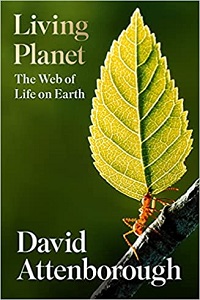
Living Planet: The Web of Life on Earth
by David Attenborough, published by HarperCollins Publishers, (2022), 9780008477868
This excellent starting point is an update on Attenborough’s Living Planet book and TV series. The key developments in this book are the adaptations made by species in order to survive in the harshest of conditions. More importantly for this topic, however, is the interdependence and interconnectedness of the ‘web’ that the title suggests. One review states, ‘By the end of this book it is difficult to say which is the more astonishing - the ingenuity with which individual species contrive a living, or the complexity of their interdependence on each other and on the habitations provided by our planet.’ The book contains a 64-page colour photo section. A wide range of biomes is covered, from seagrass to deserts, rainforests to polar regions. Teachers and students can select which sections they explore, based on their area of study.
Decomposition and recycling
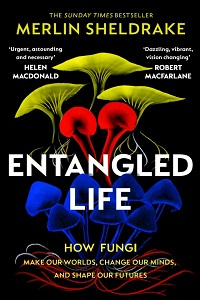
Entangled Life: How fungi make our worlds, change our minds, and shape our futures
by Merlin Sheldrake, published by Vintage, (2021), 9781784708276
This highly praised, engaging book explores the breadth and complexity of the connectiveness of fungi with the living (and non-living world). As the writer states, ‘ninety per cent of all plants depend on fungi for minerals’. Entangled Life shows how life-forms interpenetrate and change each other continuously through complex networks of decomposition and nutrient cycling. These topics can be a challenge for students, as the processes need to be adapted for different ecosystems. The book offers an excellent opportunity for teachers and higher-ability students of Living World topics to make sense of the interdependence needed for ecosystems to thrive.
Networks
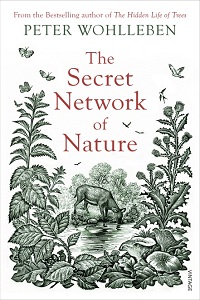
The Secret Network of Nature: The Delicate Balance of All Living Things
by Peter Wohlleben, published by Vintage, (2019), 9781784708498
This book gets straight to the heart of interdependence in the natural world. Written by a forester and drawing on contemporary scientific evidence, it explores the intricate, and often invisible to humans, connections within nature. Wohlleben seeks pattern recognition and order in the perceived ‘chaos’ of nature. Examples include the ability of wolves to alter the course of a river, and earthworms controlling wild boar populations. Later chapters focus on the impacts of climate change and wildfires on the connections he explores. The book is based on German temperate forests, so many UK students may find it easy to relate to. The accessibility of the content makes this book good background reading for students of Living World topics.
In the absence of humans
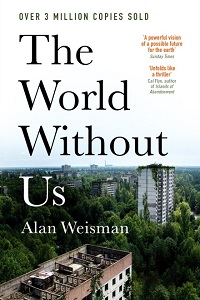
The World Without Us
by Alan Weisman, published by Virgin Books, (2022), 9780753559710
This book was first published in 2007, and recently republished. It provides a different take on the topic than the other resources provide, in exploring what would happen if humans disappeared. The book picks things up from the day after, as nature takes over and begins ‘cleaning house’. ‘Weeds, then shrubs, then forests retake suburban lawns. Asphalt cracks into a crazy paving of erupting vegetation. Subways fill with water and cave in, transforming city streets to marshland, and oil refineries burn.’ The main point is the role that humans play in the interdependence of ecosystems, and that happens when those connections are removed. The writer links this into the current human impacts, with pollution, destruction of habitats and species extinction. An interesting take on the topic for students to understand the delicate balance of life on earth, and the impacts that humans have.
Further materials
Fresh Banana Leaves by Jessica Hernandez, published by Penguin Random House, (2022), 9781623176051
Find this book
Braiding Sweetgrass: Indigenous Wisdom, Scientific Knowledge and the Teachings of Plants by Robin Wall Kimmerer, published by Penguin Random House, (2020), 9780141991955
Find this book
Sixth mass extinction could destroy life as we know it - biodiversity expert by Richard Gray, published by Horizon, the EU Research and Innovation Magazine, (2019)
Read this article
Exploring Earth’s Ecosystems by Google Earth
Access this resource
UN Report: Nature’s Dangerous Decline ‘Unprecedented’; Species Extinction Rates ‘Accelerating’, published by United Nations Sustainable Development Goals, (2019)
Read this report
Tree of Life Explorer by OneZoom, (2022)
Access this resource
David Newell is Head of Geography at Millais School in Horsham, West Sussex. He has held the GA’s Secondary Geography Quality Mark since 2015, and has worked as a Specialist Leader in Education, advising schools on improving their Geography provision.
Text © David Newell, 2022.
Text © David Newell, 2022.


